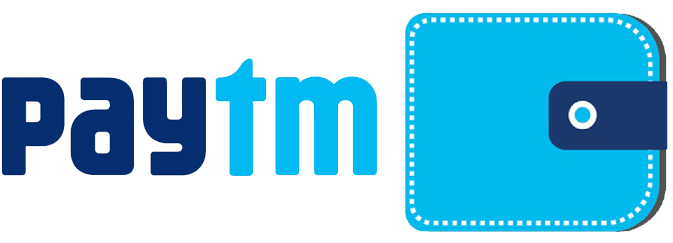The realty industry faces trust issues owing to market conditions and other factors. Despite having the financial means, a lot of home buyers are reluctant to invest in property as they are suspicious whether they would get back the returns, if they will be able to rent out the property to the right tenant who will keep it in good conditions and many such fears. Such mindsets have further deteriorated the market conditions for the property sector.

Technology is also evolving at a very rapid pace, with technologies like Machine Learning, AR/VR, Artificial Intelligence [AI], etc. acting as change-agents for the real-estate industry. However, technology can only act as a catalyst to ease the buying-selling process and the industry earnestly waits for a solution for the rental and property management problems.
Though there are many players in the market, the problem still exists. The industry needs a solution that will streamline the processes and make renting a hassle-free experience. Rentprop4u, a Bengaluru based realty start-up is trying to solve these problems by streamlining the entire rental process. Rentprop4u offers property management and rental solutions to owners and tenants. Backed by its cutting-edge technology platform and data-driven analytics, the company aims to take the worry out of owning and renting a home. Established in 2016, Rentprop4u currently has 250 plus registered properties and more than 400 users.
Today we have a chat with Nagaraju M, Co-founder & CEO of Rentprop4u about the product, problem being solved, impact of technology on real-estate sector, etc. So let’s get started with the Q&A….
Can you please walk through the idea of RentProp4u, team, etc.
During the time that I was pursuing my MBA, I came across a common but a major stress among some friends – getting an accommodation in and around the city in a limited time. It came to my knowledge that landlords too faced difficulties to rent out their properties around the city due to several tenant issues.
One of my friends from Bihar came to Bengaluru to pursue his Masters degree. He hunted for weeks together to find an accommodation but had no luck. The fact that he was a student added to his woes. Meanwhile, my uncle was a landlord of a dozen moderate 1 BHK homes which he had built just then. I got an idea – why not help my friend by convincing my uncle to rent out one of his houses to my bachelor friend. My uncle was convinced. He offered him the accommodation under my assurance about the property, its security and maintenance. My friend had a peaceful stay throughout his Masters days and my uncle too was a happy landlord.
That’s when it struck me that a landlord needs a trustee and a tenant needs a hassle-free accommodation provider, which was ‘I’ in this case. As I saw many of my other friends undergo this pain, I thought I could help a lot more people if I took it up as a business. This encouraged me to start a property management service to bridge the gap between owners and tenants. This is how I came up with Rentprop4u.
Online consumer rental market is largely dominated by Makaan, Housing, PropTiger, etc. What according to you are some of vital differentiators of RentProp4u vis-a-vis its competitors?
To be precise, we have an entirely different business model than above-mentioned players in the market. While they are property search portals, we are into end-to-end management of properties [promoting the property, property inspection, tenant screening, preparing legal documents, rent collection, property repair and maintenance, etc] while serving as a one-stop solution for all the rental needs of customers.
There are other startups that are addressing similar issue [to remove hassles like language barrier, interaction with brokers, etc.] like NoBroker, what are some of RentProp4u’s unique features that sets itself apart from such emerging startups?
RentProp4u becomes the platform ‘a click away from’ to find your desired property and good tenant for your property. More than special features, we are very specialized in making the customer happy and becoming more of the customized residential management company which is the biggest edge we have over our competitors. We believe that ‘customer is the king for us’, therefore, we more keen on keeping the customers happy and satisfied. The special features include – Zero brokerage, Assured rent for a property, property end to end management. RentProp4u’s USP seems to be attracting the NRI client base who have purchased properties in India for investments.

How does your team ensure that the bridge between the Tenant & NRI Owner is burnt with the use of emerging technologies like AI, ML, AR, VR, etc.
According to the UN reports, India has the largest diaspora in the world at 16 million. If we consider 1 per cent of 16 million NRIs as having a property in India, it is a big number and we are aiming to capture this segment on priority. Technically the property might be used either by their own relatives or locked out. The chances of these properties being rented out are slim as it is difficult for them to monitor them. In such conditions, RentProp4u will be an ideal platform for them to use to have a hassle-free renting experience. We do use automation to analyse the data we obtain from our ground staff and online transactions. The analytics help us stay up to date with the market rates and consumer behaviour. VR and AR are definitely great tools to enhance user experience. We intend to incorporate them in the future.
How has been the traction so far for RentProp4u, can you share some vital stats about properties rented, clients on-boarded and the overall response from your clients
We have on-boarded 470 plus properties and more than 650 customers.
Apart from helping the owner to rent out property, does your startup help in other aspects of property management [in order to provide valuable services in the rental eco-system]
Most of our property owners are not sure of the market rental rates for their properties and the type of tenants they can get. Our primary task is to educate the property owner about the current market rents. From finding the right tenant, performing a complete background check to offering assured rentals, managing the property and rent collection, we provide full-service rental and property management for owners. We also share property updates with property owners on a monthly basis with relevant photographs.
Currently there is no mobile app for RentProp4u, is there any timeline when you plan to launch the Android or iOS app [considering that the NRI segment would own an iPhone] since mobile has become an integral part in the buy/sell cycle
The app is on top of our list of priorities. Yes, we intend to have a separate app for owners and tenants.
RentProp4u is currently operational in how many cities and what is your future road-map w.r.t expansion [either in terms of market segment like commercial properties or expansion in other cities]
We aim to have 2,000 properties in Bengaluru in the next 2 years. At the same time we intend to replicate the model in other cities such as Hyderabad and Chennai and then take it across the country. We have plans for overseas expansion too.
What is the revenue model of RentProp4u ?
We help tenants find the home of their choice at zero brokerage. We do not charge them a single penny. As for owners, we charge them a month’s rent as a service fee for managing their property. That’s our revenue stream. However, we do not charge them for property visits, paperwork and other services. We act as a bridge between the owner and the tenant throughout the rental cycle. We help the owner find the right tenant and the tenant find the right home.
There was a big slowdown in the real-estate market first due to demonetisation,than due to GST, RERA, etc. How is the overall market situation right now & whether there are positive synergies leading to the growth in momentum.
Home rentals did not have any direct impact either by demonetisation, GST or RERA. Property selling and buying has been slowed due to these reforms. Probably 2018 will be an ideal time to assess whether home rental will have an impact because of the reforms. If the buying and selling reduces further, we will definitely have a problem.
Can you talk about the funding status of RentProp4u, whether it is bootstrapped/angel funded/seed funded/etc. and are you looking for any external/strategic investment ?
Thus far it has been self-funded and since we are planning to expand our business to other cities and building various apps for our business, we are definitely looking for funding from those who understand our business model.
What are some of the marketing strategies used by your team in order to market the core product ?
Our portal supports us in a lot of our marketing efforts. We have an in-house team for digital marketing. Our other marketing activities include branding, PR, offline promotions such as banners, pamphlets and others.
How big is the Total addressable market [TAM] of the online consumer rental segment ?
The Indian residential rental market is worth $20 billion, as per a report in Forbes. This consists of $13.5 billion in urban, $0.8 billion in rural and $5.7 billion in vacant Non-Resident Indian property brokerage.
The NRI segment is definitely our main target and they prefer to use technology to communicate with us and with the tenants as they are away. While this works in our favour, a large portion of the urban property owners are also increasingly using the Internet to manage their property needs. This is the audience we intend to capture.
There are has been lot of talks about AI, Machine Learning [ML] in the real-estate sector, how much impact will AI and ML have on the online real-estate sector ?
All those technologies are going to have a great impact on buying & selling since every transaction has been digitized and these technologies come handy to minimize the task and make it quick too. More over the data will be secure.
When it comes to residential rental management, the technologies can help not only in securing our data but also in crunching huge amounts of data and making sense of it. It will also help in minimizing human error and oversight. In the future, AI will play a great role in responding to our client queries and storing their requirements which will be help us in resolving them much better when they recur.
What are some of the measures taken by your product/tech team to provide ‘customized residential management experience and to ensure that there is a maximum conversion rate ?
Our product team has been phenomenal in maximising the technologies we have implemented. The team has taken all aspects into consideration while building our platform to ensure that it is responsive to our customer needs, allowing them to interact with us in a convenient manner and helping us in resolving their queries.
The team is working on a unique app for our clients to give them a better experience with property maintenance, repair and rent collection.
Chat bots are now becoming main stream with Fintech, Banks, etc. how can chat bots be used to enhance the overall renting experience ?
The instantaneous feature of chat bots is its greatest strength. It is definitely a big boon for companies with a huge customer base. At this point we are more focused on personalized human communication as we are still trying to understand our customer requirements and pain points. So we have not incorporated the chatbot feature. We might include it in the future when we feel the need.
With the advent of sub 1500 phones, new segment of customers have emerged that could be first-time data users. Are there any plans of RentProp4u to cater to this market [be it a light-weight app/site, etc.] ?
It is too early to comment on this segment. We want to wait and watch how this segment responds to data and then take a call.
What are some of the emerging trends in the tech-space and where do you see the real-estate sector [from a tech point of view] couple of years down the line ?
As you rightly pointed out earlier, VR and AR are already making waves in the rental space globally. It might take time to see traction in India because of the price factor. By integrating VR into property platforms, tenants are able to view available places from anywhere without needing to be physically present at the property, thereby saving them a lot of time on visits. Augmented reality helps in taking this to the next level.
However, it is AI and Machine Learning that has found takers in the rental space. A lot of property search portals and property management start-ups are using these for data crunching and analyzing customer behaviour. These technologies will see more use in the future.
2016 was a tough year for startups [especially from a funding point of view], how according to you should entrepreneurs deal with such adverse situations ?
I advise them to stay patient during the initial few years as a start-up needs time to take off. There will be several ups and downs; you cannot have success without overcoming these hurdles. Continuous learning is a must since change is the only constant in today’s fast-paced world. Also be a leader and not a ruler.
Can you share some tips for building an effective team for startups [especially the initial core team] ?
The most significant part of startup success totally depends on the kind of team that you build. Therefore you must be very careful in selecting your team. Besides the core skills, it is important to focus on whether the candidate is a team player with a never-give up attitude who is able to handle stress and if he/she shares the same kind of passion as the company.
As per your entrepreneurial experience, when should an entrepreneur look out for external funding ?
According to me, it is best to seek funds after a year of existence in the market wen you have adequate knowledge about our product/business and its scalability.
Some books that you highly recommend for entrepreneurs ?
These are some titles that I mostly recommend to entrepreneurs
- Zero to One
- The Entrepreneur Mind
- Venture Deals
- Realty Check
Some closing thoughts for our readers!
If you have the vision and are passionate about your business, and you are willing to work hard, there is nothing that will stop you from reaching your dream. RentProp4u is one stop solution for all your rental problems. We are here to burn the bridge between owner ant tenant.
We thank Nagaraju M for sharing his insights with our readers. If you have any questions for him or the RentProp4u Team, please email them here or share them via a comment to this article.













